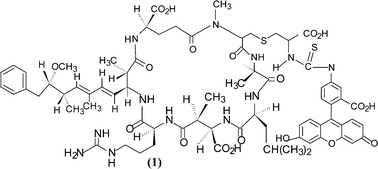Novel fluorescent biosensor for pathogenic toxins using cyclic polypeptide conjugates†
Abstract
This work describes a two-step conjugate synthesis of a new fluorescent analog of microcystin-LR and its subsequent utilization for the development of an optical biosensor for cyanobacteria


 Please wait while we load your content...
Please wait while we load your content...